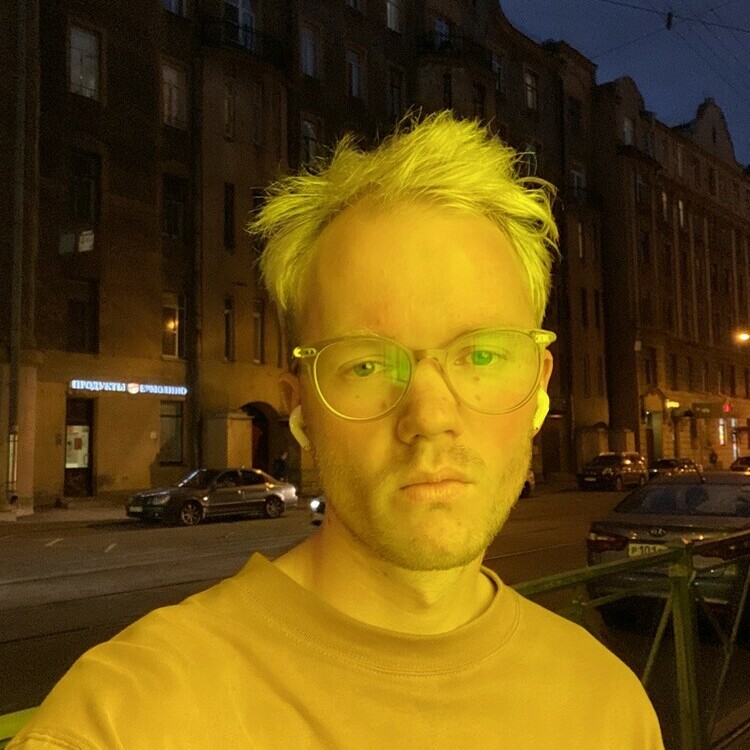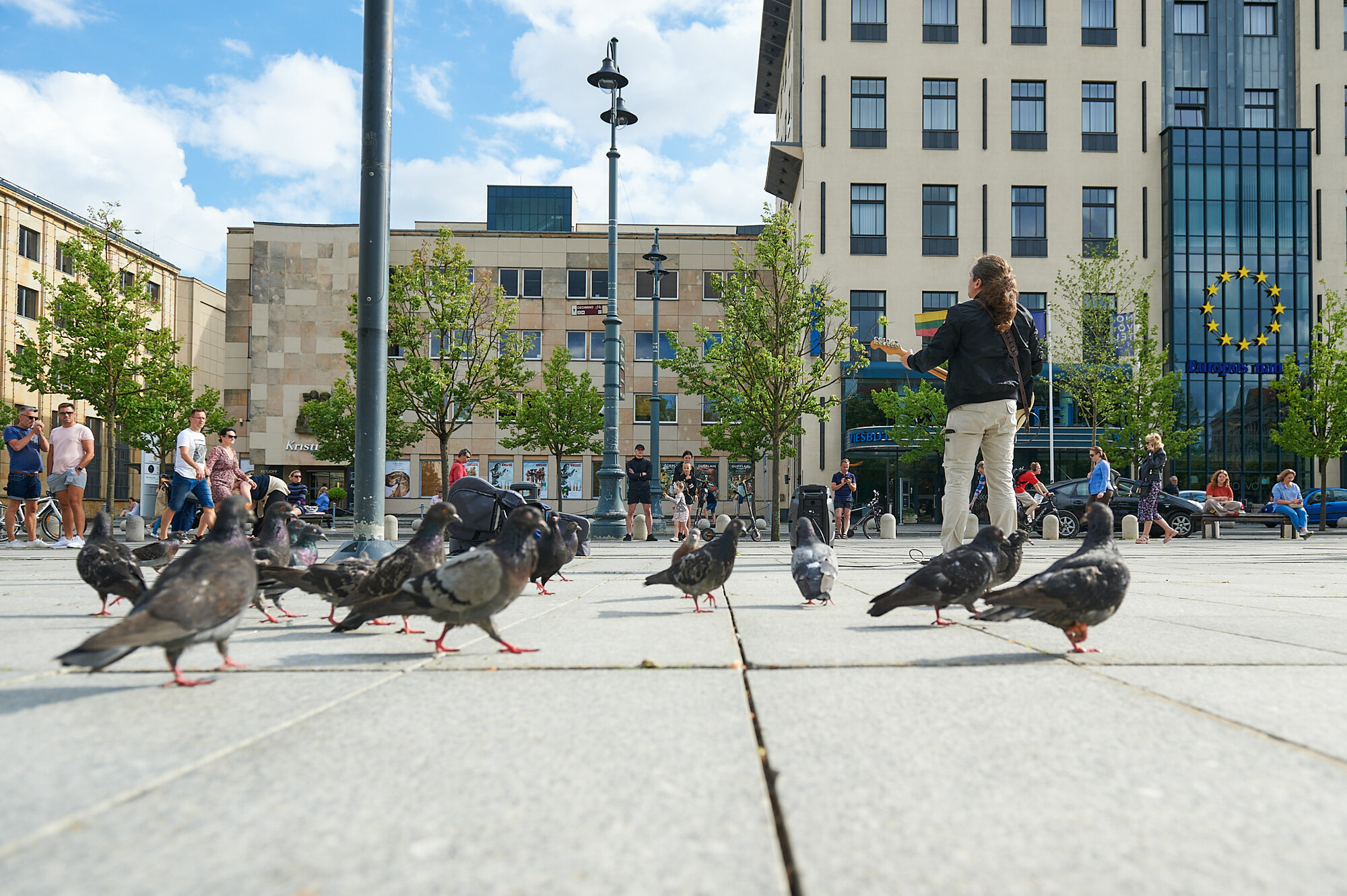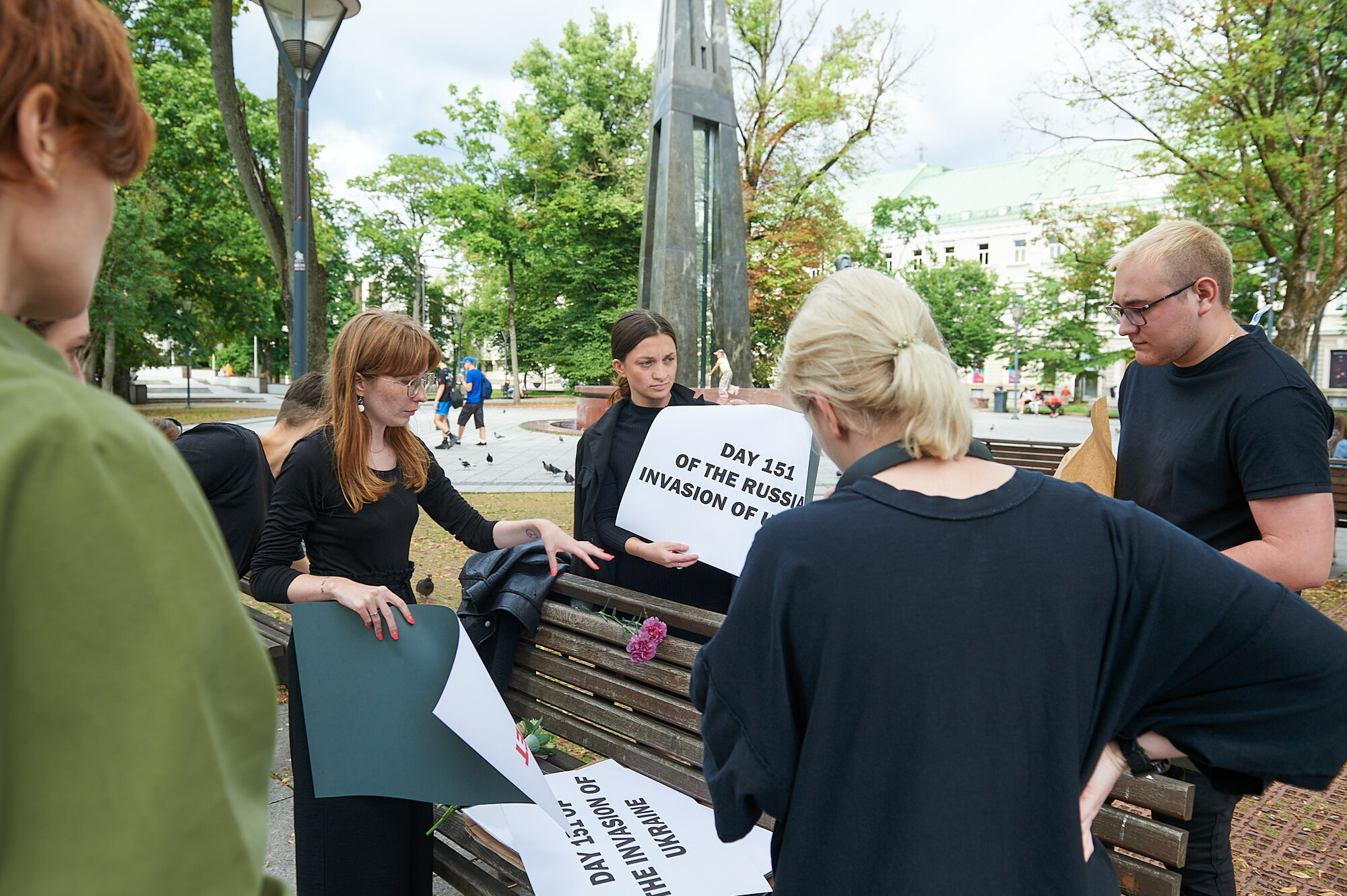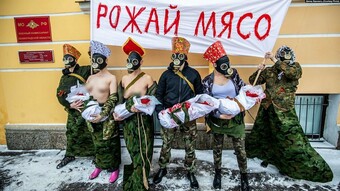Alexandra Skochilenko is a thirty-year-old artist from St. Petersburg—the city where I lived before Russia attacked Ukraine. She made music and films, drew comics about depression, and worked as a photojournalist. On 11 April 2022, Skochilenko was arrested and placed in a pre-trial detention center, where she is currently still being held. A criminal case was filed against her, with a maximum sentence of fifteen years in prison. She has bipolar disorder and celiac disease (gluten intolerance), so the first days in the detention center she starved because she could not eat local food. In spite of this, she was not even released under house arrest.
Skochilenko must have done something terrible and posed a public danger, right? In fact, she was arrested for changing price tags in a Perekryostok supermarket for sheets of information about the war in Ukraine, specifically information on how many people died when Russian troops bombed the Drama Theatre in Mariupol. Sasha is one of at least seven people arrested for this type of performative protest alone: The day before, fifty-eight-year-old St. Petersburg resident, Vera, was detained. The next day, it was a fifty-nine-year-old reanimator who was putting up anti-war stickers in a Lenta supermarket. But Skochilenko is the only one of them to be criminally charged.
In the four and a half months since the war began, more than 15,000 participants in anti-war protests, individual pickets, and performative actions have been detained in Russia. Criminal cases were initiated against 165 people. Of the approximately 150,000 people who left Russia after the war began, there are thousands of journalists, activists, artists, and people with anti-war stances who no longer feel safe in this country because of the pressure of the security forces. I am one of them.
This is nothing compared to the millions of Ukrainians displaced by the war and the tens of thousands killed—yet it happens. With unprecedented mass detentions at the beginning of March (more than five thousand people were detained across the country on March 6 alone), Russian authorities have stemmed the tide of public protests, but anti-war protests in Russia have not stopped. Rather, they have taken other forms. And one key form is performative protest.
What Can Performance Perform?
In July 1993, Susan Sontag traveled to the bombed-out city of Sarajevo to stage Waiting for Godot in the middle of the Bosnian War. In her text about the experience, she first responds to those who think it is a “pretentious” or “insensitive” gesture to stage such a depressing play in the midst of real human despair. She writes that no matter what horror is being experienced, there will always be those who care to see their reality transformed by art and those who don't need it, even in peacetime.
The question of the relevance of art in wartime has been widely discussed in Russia, Ukraine, and other countries over the past four months. In March 2003, more than 150 theatres in New York City united in an anti-war campaign, Theatres Against War, interrupting ongoing activities to protest the invasion of Iraq. Not a single major theatre in Russia has suspended its work since 24 February of this year. This hits on important questions about art and activism that theorists have discussed for decades: Can art influence what is happening? Can artivism stop war? Does performance lead to social change?
These questions refer to the topic of the usefulness of art—something neoliberal regimes are concerned with; how anything can produce a calculable benefit. Capitalism and patriarchy are structured in such a way that, within them, artistic activity is regarded as something unserious compared to political and economic activity (which are essentially much more virtual but due to the structure of society they can have a larger scale of influence) or military activity. This is why within capitalist ideology, art is constantly in the mode of self-justification to prove its necessity—including to the protest movement.
This question itself seems to me highly unproductive because it ignores how social change actually takes place. In the book Politics of Affect, Brian Massumi—explaining the political dimension of affect—writes that as one goes through the “terrain of life,” one engages in different situations, each filled with certain potentials.How these potentials unfold depends on the workings of affect—people's capacity “to affect and to be affected." Performance and art activism have the capacity to radicalize people to varying degrees, inform their decisions, provoke, and amplify affect, and to provide the very interfaces between people—which, in turn, also produces affect. And in this sense performative protest and art activism are naturally part of the movement toward social change and peacebuilding.
War is not homogeneous. As we see in contemporary Russian politics, the actions (and inactions) of various parties—their own affective field—gradually make war possible. It is a collective effort (plus the helplessness of atomized people in a propaganda-soaked environment). Likewise, anti-war protest is a collective effort of different parties, one of which is artists. The pathetic question of the influence of art on the world is really the question of whether art participates in politics on an equal footing with others.
Unfortunately, in Russia (as in Ukraine and many other countries), this is still an open discussion. In many places mainstream culture still separates itself from politics. This is the sad result of the usurpation of power by narrow groups and the alienation of people from it. This is especially odd in the case of theatre and other living arts—one has to be radically oblivious to its political nature to think that theatre can be apolitical. The history of performance art in the last century begins with the Dadaist movement (whose main driving force was the protest against the absurdity of war) and the Situationists, and owes much to the feminist protest movement.









Comments
The article is just the start of the conversation—we want to know what you think about this subject, too! HowlRound is a space for knowledge-sharing, and we welcome spirited, thoughtful, and on-topic dialogue. Find our full comments policy here